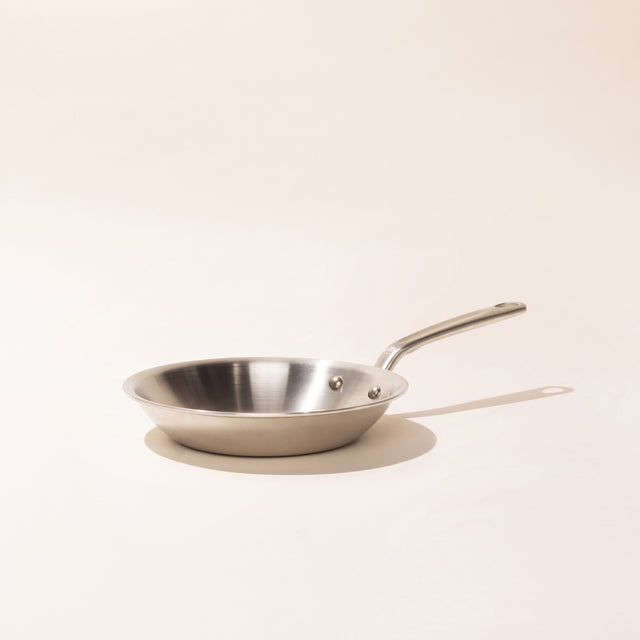




Unlikely? Yes. Impossible? No.
Despite the name, stainless steel isn’t quite immune to rusting, even if the chances are relatively slim compared to other metals. But we’re not here to cause a panic—instead, this guide is meant to explain the science behind a rusty stainless steel pan, and how you can prevent it from happening.
And just in case it does happen, we’ve included a couple of fail-proof methods for restoring your pan to its shiny best.

One of the key components of stainless steel—and the main reason for the name—is the inclusion of the mineral chromium. When chromium oxidizes, it creates chromium oxide, which forms a protective barrier against rust, corrosion, and staining. Chromium can only keep your pan safe if it’s intact, so if your pan has started to develop rusty spots, there’s a very good chance that this barrier has been damaged somehow.
Basically, a problem arises when the protective chromium oxide barrier gets severely scratched or corroded, either by metal cookware, harsh detergents, or other elements. This exposes the metal to oxygen and water, which causes rust to form.
Pans with a lower chromium percentage are even more vulnerable, hence why we recommend a higher percentage. Cookware with an 18/10 ratio of chromium to nickel, for example, is especially tough and corrosion-proof.

While ominous-looking, rust isn’t a death knell for your favorite piece of shiny cookware. Here are two options for buffing away rust, both of which use ingredients you already have in your cupboard. For both methods, just make sure your pan is completely cool to the touch before cleaning.

Even the best stainless steel cookware is susceptible to rust if it’s not taken care of properly. Thankfully, this fate is easily preventable. Here are a few tips for keeping your pots and pans looking pristine.
Don’t let the thought of rust scare you away from stainless steel cookware. These workhorse pots and pans will last for decades, even with the bare minimum required to maintain them.
We think your pan should do more than just last a long time. With our 5-Ply Stainless Clad cookware collection, your hard work and steady maintenance will be rewarded with crispy eggs, tender fish, and a truly restaurant-quality sear every time.
We use cookies to provide a better user experience. By using our site, you agree to our use of cookies. See our Privacy Policy to learn more.